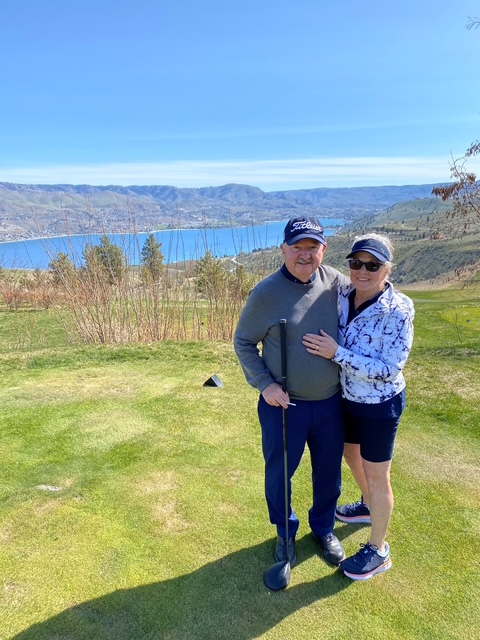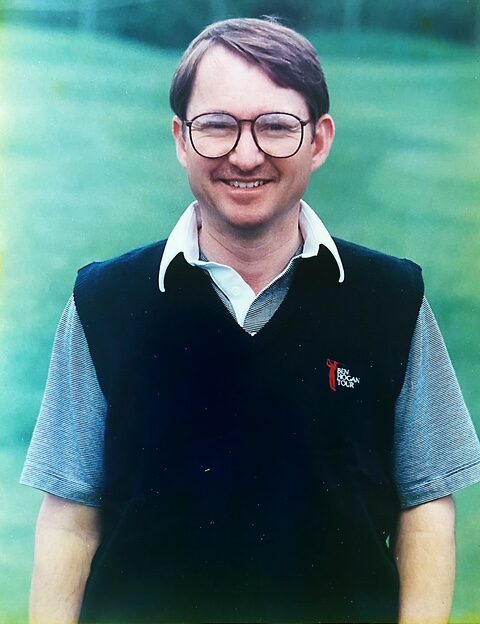June 10, 2025
By David Foreman, Jackson Park Men’s Golf Club Treasurer
Julius Jorgensen, a PGA professional and Washington state golfing world icon, recently shared his ties to Jackson Park in a lightly edited Q/A with JPMGC Treasurer David Foreman.
What led you into the golf profession?
When I was in high school, I wanted to earn my varsity letter, but I only had two choices, wrestling or golf, because of my size. I chose golf, but I had no clubs and so I told my father I needed some help to buy some clubs. He told me to get a job because we didn’t have much money.
That summer I sold soda pop between two holes at the municipal golf course. My Mom would take me to the store and we’d get a couple cases of Cragmont soda pop and on Saturdays she would drop me off with my cooler of pop and I would sell it by the can in between those two holes. By the end of the summer I had made $90 and I was able to purchase a set of Wilson K28 irons. Dad had some old woods that he had acquired over the years even though he didn’t really play golf.
There was a par-3 course on the grounds of the nearby VA hospital that I was able to access, with my dad being in the military. I begged to go out there every weekend and learned to play golf on that course and developed a really good short game, but no long game to speak of. I tried out for the team at James Monroe High School in Sepulveda (California) and made it, barely. I was the last one on the team and lost every match and never broke 80. Our team finished first in the league. The next year nearly all the players had graduated and I was a senior, but I continued to lose and still hadn’t broken 80, but it hadn’t broken my spirit and I still had a love for golf.
After graduating I started college, but made a couple wrong turns and ended up getting drafted and went into the military medical corps. After training I had a choice of going to Vietnam or extending my training for another year in Houston. Choosing the latter gave me classes in the mornings and afternoons off, so I had my clubs shipped to me and I played every afternoon and weekend that I could and got my handicap down to a 6.
Orders again came for Vietnam, but this time I was assigned special medical field training in microbiology at Fitzsimons Army Medical Center (Colorado), but still found time to golf every day and got my handicap down to a 3 and won the club championship—first to win it from the Medical Center since Orville “Sarge” Moody, winner of the 1969 U.S. Open.
After the military I went to school here at UW on the GI Bill and tried out for the team. The non-exempt players had to vie for a place by competing in a tournament at the Seattle Golf Club. I placed well enough to qualify, but the coach said he wasn’t putting me on the team because I didn’t hit it far enough. That derailed my golf dreams, but I continued my studies and graduated with a degree in microbiology and worked at UW until I was 30 and found myself at another crossroad, pursue a PhD or do what I love. It was 1980 and I choose the PGA.
What brought you to Jackson Park?
Even though I hadn’t made the team at UW I still had a love for the game and joined Jackson Park in 1974 and bought the annual pass for $175, which allowed me to play all the city courses year-round.
Then with my career change I applied for a job with Mike Reasor, who had just acquired the lease at Jackson Park. I wrote him a letter expressing my love for the game and my desire to serve golfers. He hired me and I ran his business and gave lessons so he could continue to play lots of golf. When he hired me he could only afford to pay me $750 a month, but he did have an apartment he could offer me that would only cost $25 per month. That apartment was the second story of the Jackson Park clubhouse. That’s where I resided from January 10th, 1980, to the fall of 1982.
My first job of the day was opening the gate for the golfers and my last job of the day was making sure the gate was locked up and there were no stray golfers testing their night vision, which could be as late as 10:00 in the summer.
-

Julius and Diana Jorgensen enjoying a round of golf (photo courtesy of WA Golf).
What are some of your memories living at Jackson Park?
Mike told me that he was going to be my first full-swing lesson with woods and irons. I did OK and he told me afterwards “just teach what you know and don’t try and teach someone else’s methods.”
During lessons we would hit balls down the hill where the old number 9 used to be, then drive down and pick up the balls and hit them back up the hill.
Our second year there we set a record for rounds of golf on the West Coast. They even sent a reporter out to identify the person who put us over the mark. We attributed our success to revising the tee time policy so that the 7, 15 and 45 min tee times were only for walk-ons, no reservations allowed for those times. This served two purposes. We were able to keep the tee sheet filled even if reservations were cancelled or there were no shows and we were able to sell more merchandise as the walk-ons browsed the shop waiting to get on the course. This also led to a sales record for the shop.
One night the alarm went off so I grabbed my baseball bat and headed downstairs (which I was told never to do again). I found an open window in the locker room with a brand-new set of Pings right below. Earlier in the week I had spoken with a member about that specific set of clubs, which led to him being caught. They had gone into Bogeys first, the name of the café at that time, got drunk and grabbed a bunch of food and stuff. They found a microwave near the east-side fence and a pail full of frozen meat on the 18th green. They were able to identify them by their car parked near the west-side fence.
The most tragic story was a patron falling over dead while waiting in line to pay his greens fees. An EMT that happened to also be in line tried to save him, but said he was probably dead before he hit the ground. They found out he had a history of heart problems. For most of the day he laid under a sheet in what used to be a small building north of the pro shop with the vending machines, until finally the funeral home came to pick him up.
-

Julius Jorgensen during his time at Sand Point Country Club (photo courtesy of WA Golf).
One memorable altercation was a couple of patrons got into fisticuffs on the course, continued the brawl in front of the pro shop, then one rammed into the other’s car in the parking lot.
There was a notorious group that didn’t believe that temporary greens applied to them and would play the regular greens when not allowed. They also didn’t care to play using temporary mats when grass tees were not allowed. There was no reasoning with them, so I was assigned the job of confronting them. They told me to “F-off” and I told them here are the options: one, we get into a fight and I lose; two, we can call the police and have you taken off the course; or three, I can talk to the men’s club president and have you banned from the course, which was the option taken. The City of Seattle was unsatisfied with any of those options and I was given a reprimand for not handling it properly.
What did you find most enjoyable about living/working at Jackson Park?
I loved my commute. It taught me a lot about the business of the sport and the people. It gave me ready access to the putting green and helped me refine my skills enough to win along with my amateur the Washington state putting championship. I loved every second of living there, just like my love of the game.
What caused you to leave Jackson Park?
Mike left for an opportunity in Palm Springs and I didn’t have my Class A PGA credential so the owner of the leases for the other Seattle municipal courses brought in his own personnel and I got hired at Sand Point Country Club and continued to develop my professional career and business.